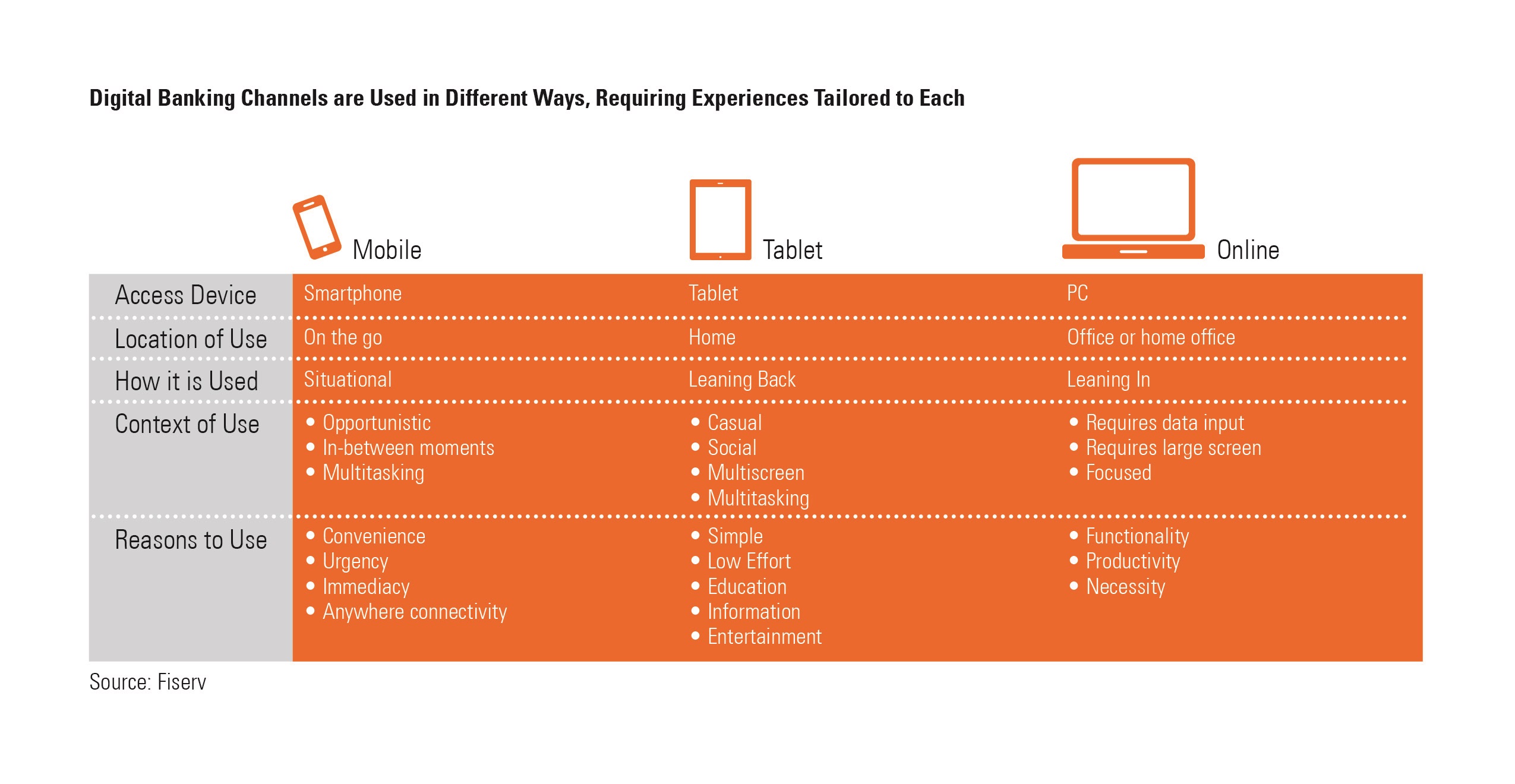
As a result of this evolution, credit unions that want to deliver the best member service are faced with delivering experiences tailored for each channel, while maintaining a thread of consistency throughout.
Understanding where, how and why members use different digital banking channels positions credit unions to take on this challenge and exceed member expectations with robust digital offerings.
A Device Does Not Define a Channel
To offer a truly tailored experience, credit unions should leverage each digital device's capabilities to boost the functionality of the channels. For example, smartphones are fitted with cameras that can be used to capture information, tablets offer tactile functionality and a portability that encourages leisurely browsing, and PCs have keyboards, a mouse and a large screen that facilitates the input and review of information.
However, the device in and of itself does not define the channel. To optimize each of the channels, credit unions must also consider where and how members use the device and the context and reasons for its use.
Recent qualitative research conducted by Fiserv user experience experts, provides insights into consumer behaviours across digital channels, as summarized in the following table.
Evaluating Members' Channel Use
 The research demonstrates why one size certainly does not fit all when it comes to a great multi-channel experience.
The research demonstrates why one size certainly does not fit all when it comes to a great multi-channel experience.
(Click on image at left to see expanded)
For example:
Mobile. Brief, on-the-go interactions that take place in the mobile channel necessitate easy navigation and quick access to information such as account balances or ATM locations. Mobile users may also look for the ability to execute just-in-time transactions such as transferring funds prior to making a purchase.
For members engaged with mobile technology, services like remote check capture and the delivery of contextually relevant data (such as rewards earning and redemption opportunities presented during a transaction) are also a good fit.
Tablet. The casual, at-home use of tablets encourages relaxed browsing in a lean-back posture. Tablet users desire simple, visually compelling content that is navigated with swipes and taps. As they sit in their living room they can talk with their family or friends about a suggested product, ask questions about the product via chat, then take action after getting input.
The context of tablet use, in combination with its capacity to provide relevant content and chat capabilities to connect with customer service representatives, provides a compelling value proposition to credit unions who may have struggled to engage task-focused PC users for cross-sell opportunities.
Online. PCs are used for tasks that require considerable effort such as data input, budgeting and tax preparation which would often be cumbersome on a mobile phone or tablet. Users typically sit down and lean in to focus, often in a room away from others. Tasks such as detailed PFM categorization, budgeting and tax preparation lend themselves well to the online channel.
Consistent Information, Coherent Design
While members expect tailored experiences for each channel, they also desire consistency in their banking interactions. The combination of these expectations – for both tailored experiences and consistency of information – means that members want their digital interactions to share a common thread, rather than involve a patchwork of disparate experiences that create confusion.
This includes displaying the same account names and account information, ensuring the same passwords and preferences can be used, and having the same look and feel across channels. Above all, it is essential that data is accurate, real-time and consistent.
By providing tailored user experiences across the mobile, tablet and online channels, credit unions will ensure delivery of the right functionality on the right device while also providing consistent information and a coherent experience and appearance.
As new ways of banking emerge, the role of existing channels may change, but the importance of delivering tailored experiences and consistent information across all channels will continue to be essential in delivering the ideal user experience.
Steve Shaw is vice president of strategic marketing, Digital Channels & Electronic Payments Divisions, at Fiserv Inc. in Brookfield, Wis.
© Touchpoint Markets, All Rights Reserved. Request academic re-use from www.copyright.com. All other uses, submit a request to [email protected]. For more inforrmation visit Asset & Logo Licensing.






